
The police are a constituted body of persons empowered by a state, with the aim to enforce the law, protect public order, and the public itself. This commonly includes ensuring the safety, health, and possessions of citizens, and to prevent crime and civil disorder. Their lawful powers encompass arrest and the use of force legitimized by the state via the monopoly on violence. The term is most commonly associated with the police forces of a sovereign state that are authorized to exercise the police power of that state within a defined legal or territorial area of responsibility. Police forces are often defined as being separate from the military and other organizations involved in the defense of the state against foreign aggressors; however, gendarmerie are military units charged with civil policing. Police forces are usually public sector services, funded through taxes.
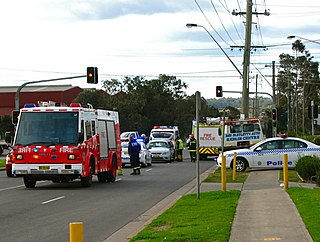
Emergency services and rescue services are organizations that ensure public safety, security, and health by addressing and resolving different emergencies. Some of these agencies exist solely for addressing certain types of emergencies, while others deal with ad hoc emergencies as part of their normal responsibilities. Many of these agencies engage in community awareness and prevention programs to help the public avoid, detect, and report emergencies effectively. Emergency services are often considered first responders, and typically have dedicated emergency vehicles.

West Midlands Police is the territorial police force responsible for policing the metropolitan county of West Midlands in England.

Avon and Somerset Police is the territorial police force responsible for law enforcement in the five unitary authority areas of Bristol, Bath and North East Somerset, North Somerset, Somerset, and South Gloucestershire in South West England.

A police car is a ground vehicle used by police and law enforcement for transportation during patrols and responses to calls for service. A type of emergency vehicle, police cars are used by police officers to patrol a beat, quickly reach incident scenes, and transport and temporarily detain suspects, all while establishing a police presence and providing visible crime deterrence.

A patrol is commonly a group of personnel, such as law enforcement officers, military personnel, or security personnel, that are assigned to monitor or secure a specific geographic area.
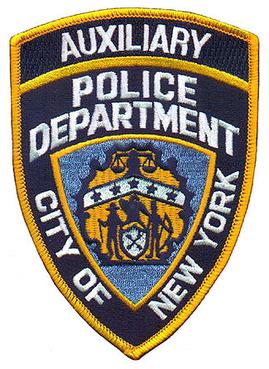
The New York City Police Department Auxiliary Police is a volunteer reserve police force which is a subdivision of the Patrol Services Bureau of the New York City Police Department. Auxiliary Police Officers assist the NYPD with uniformed patrols, providing traffic control, crowd control, and other services during major events.

The Hampshire and Isle of Wight Constabulary is the territorial police force responsible for policing the counties of Hampshire and the Isle of Wight in South East England.
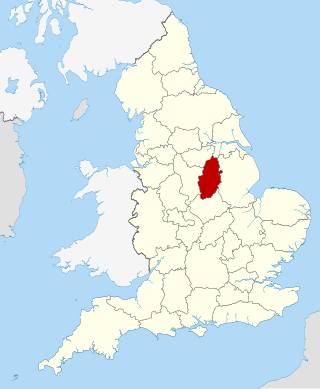
Nottinghamshire Police is the territorial police force responsible for policing the shire county of Nottinghamshire and the unitary authority of Nottingham in the East Midlands area of England. The area has a population of just over 1 million.
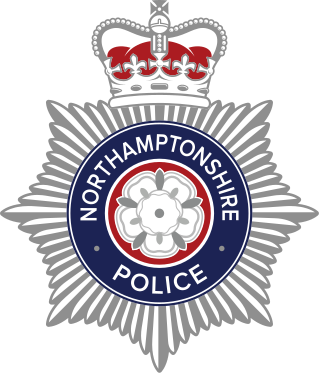
Northamptonshire Police is the territorial police force responsible for policing the county of Northamptonshire in the East Midlands of England, in the United Kingdom.

The Los Angeles Police Department (LAPD), the primary law enforcement agency of Los Angeles, California, United States, maintains and uses a variety of resources that allow its officers to effectively perform their duties. The LAPD's organization is complex with the department divided into bureaus and offices that oversee functions and manage specialized units. The LAPD's resources include the department's divisions, transportation, communications, and technology.
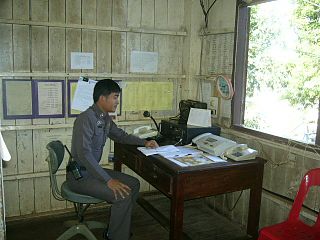
Police radio is a radio system used by police and other law enforcement agencies to communicate with one another. Police radio systems almost always use two-way radio systems to allow for communications between police officers and dispatchers.
The Salleh System is a concept presented by Mohamed Salleh bin Ismael, the Malaysian Inspector General of Police to increase the effectiveness of action to eradicate crime by involving the public directly. The system to prevent crime before it is not effective, and it appears when observing the increase in crime in the mid-1960s considerable concern.

The history of law enforcement in the United Kingdom charts the development of law enforcement in the United Kingdom and its predecessor states. It spans the period from the Middle Ages, through to the development of the first modern police force in the world in the nineteenth century, and the subsequent modernisation of policing in the twentieth and twenty-first centuries.
The Columbia Police Department (CPD) is the principal law enforcement agency serving the city of Columbia, Missouri in the United States. It protects a metropolitan population of nearly 127,000 with 187 sworn police officers.

The Reparto volanti, that dispatch the various Squadre Volanti, is a section of the Ufficio Prevenzione Generale e Soccorso Pubblico of the Italian State Police. Headed by a high ranking member of the State Police, they are present in every "Questura", the provincial office of the Public Safety Department, which is the ministerial branch Italian State Police belongs to. The same service is also performed by personnel of Police Precincts, whose first-response vehicles work alongside and under the same provincial dispatch office that resides in the Questura, making them all identical.

Police transport refers to any form of transportation used by police in their duties. These primarily include methods for patrol and prisoner transport.
Captain Athelstan Horn Popkess was Chief Constable of Nottingham City Police from 1930 to 1959 and as a result of his transformations in modernising policing could be considered the twentieth century's greatest police officer in the UK according to a 2020 biography. He achieved particular notoriety following an investigation into corruption in Nottingham City Council in an incident which became known as "The Popkess Affair" due to the false suspicion that he had leaked information.
Nottingham City Police, originally founded as the Borough of Nottingham Police, was a UK police force created under the Municipal Corporations Act 1835 in the style of Robert Peel's Metropolitan Police which initially launched in 1836. This initial force failed and was re-founded successfully in 1841. It had responsibility for law enforcement within the geographic area as defined by the boundaries of the city of Nottingham. Under the Police Act 1964 the force was compulsorily amalgamated with Nottinghamshire County Police to form the Nottinghamshire Combined Constabulary, now re-named Nottinghamshire Police.
Plural policing is a term that describes the idea that the police cannot work on their own as the sole agency to deal with the wide range of issues that they are expected to deal with in the present day. It draws on the idea of a mixed economy and so is also sometimes referred to as mixed economy policing. Plural policing relates to the wide range of other agencies, both public, private, and charity that work towards the generic aim of law enforcement. The idea of plural policing was first considered in an article by Les Johnson in 1993 entitled "Privatisation and Protection: Spatial and Sectoral Ideologies in British Policing and Crime Prevention" in the Modern Law Review. Ten years later, he expanded on this initial work in a further article.


















